2020-Year of the Woman (100th anniversary of the women’s right to vote)
It’s common knowledge. Businesses become more successful when leadership teams are diverse. When we include people of varying intellect and different points of view, our companies get a wider lens, valuable skillsets we otherwise wouldn’t be able to access.
It’s an historic time and refreshing to see companies (thanks to many, plus recent legislation) looking to women, of all ages and cultures, to join leadership teams in an effort to make those teams more diverse.
Are there enough qualified candidates? Is everyone ready?
The answer is, quite often, yes! But not always. Our experience training thousands every year tells us that many women (and companies) could benefit greatly by becoming mindful of antiquated communication habits that, despite some best efforts, still remain.
We don’t like to place all women or all men into any stereotypical box, but we have found that too many women still have communication challenges that, traditionally, are deemed more “female.” Examples include:
- Placing a question mark at the end of sentences (uptalk)
- Apologizing when there is no need
- Diminishing their value by using tentative words such as little or just while describing accomplishments
We see many millennials, of both genders, struggling with these traits as well. But that’s an article for another day!
Today, let’s examine six communication guidelines to prepare women to become great leaders in what we call The Year of The Woman, 2020.
- Communicate with Self
Negative self-image is still slowing women’s progress. Many women were never taught to think highly of or assert themselves. Women often second-guess themselves and wonder if they are acting too aggressively. Authoritative communication skills must continuously be polished because they are what is necessary to drive processes and reach goals. All leaders can learn how to communicate authoritatively in a respectful and kind way. But it takes will, skill, and practice to overcome antiquated thinking. All leaders must be well aware of limiting beliefs so they can challenge and change them.
Become your greatest advocate.
- Burn Your Cloak
Leaders communicate both verbally and non-verbally. Female leaders need to know they can take up more space to be seen. They can do that by standing up while speaking, which also helps to increase volume. When sitting around a board table, they can place one arm by their side and another on the table, to open up and look larger. Dressing in black or beige is sometimes appropriate, but it’s an easy fashion rut to get into. Good posture is vital and can counter the ill effects of hovering over electronics. Continuous deep breaths help shake off anything else women might be hiding behind.
Become unapologetically visible.
- Communicate More
Great leaders know how to connect human to human. They carry themselves with confidence in the hallways. If working remotely, they pick up the phone often and jump on video calls. They engage colleagues and employees often using first names and make it a point to ask what matters to them and what they’re having difficulty with. Presentation skills are sought after in every industry, so they challenge themselves to be seen AND heard. Leaders know it takes practice to keep communication organized and concise. The ability to tell a story in record time is a coveted skill. As is the ability to be real and, occasionally, vulnerable.
Relate interpersonally, internally and externally.
- Communicate Less
Leaders speak at a high level, know how to pause and when to stop. Because many women are generous and knowledgeable (and often not as confident as they could be), they can over-give and over-share. People keep talking for many reasons and it is usually because they are inductive thinkers and communicators. Inductive communicators believe people need the details first which lead to a conclusion. This can confuse listeners and lead to communication overload. Deductive communicators get to the point quickly, then follow it with the important details. There’s room for both inductive and deductive communicators on the senior leadership team, but it’s imperative leaders know which way they skew, and how to switch between the two as they manage their relationships and time.
Remember time is money.
- Articulate Your Value
Leaders know what makes them credible and are able to speak about it. Credibility, or ethos as we call it in speech communication, is vital to have and to articulate. What makes a leader credible? Education? Experience? Results? Credibility is situational. What matters to one listener may not matter to another. Addressing the CEO of a manufacturing organization is quite different from speaking with the president of a bank. Establish credibility early in a conversation or presentation, then continue to build it. Always be able to speak about what makes you credible. Practice. Become a person of interest.
Do not go unnoticed.
- Relax
Leaders move forth with a balance of urgency and calm and know that in 2020, it’s all about collaboration. It is through teamwork that leaders are able to galvanize the workforce to move toward goals. This takes communication, trust, and energy. So, work hard, but relax. Know what you can and can’t control and do not seek perfection. Instead, attune yourself to what needs to be done and the team that is helping to take you there. Relaxed leaders are able to be present with people and the situation at hand, which makes them more mindful of what is needed to maintain momentum. When stressors happen, and they will, a great leader continues to think strategically, remains calm, clear, and in control as they communicate internally (with the workforce), externally (with clients and in the community), and with themselves (the most important person with whom to communicate).
It’s 2020. Be the calmest one in the room WHILE being assertively effective.







